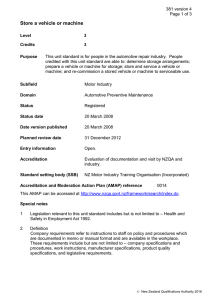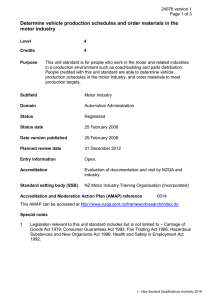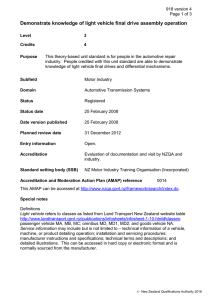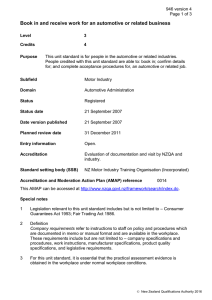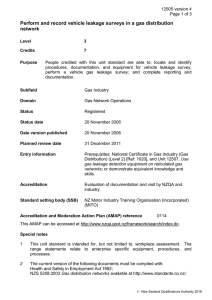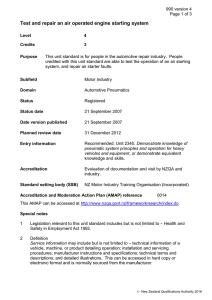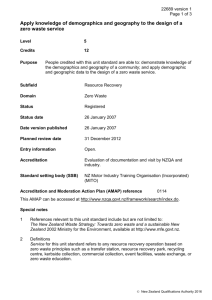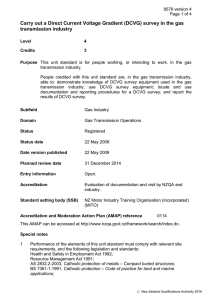23582 Control traffic at the off-loading area of a solid waste
advertisement
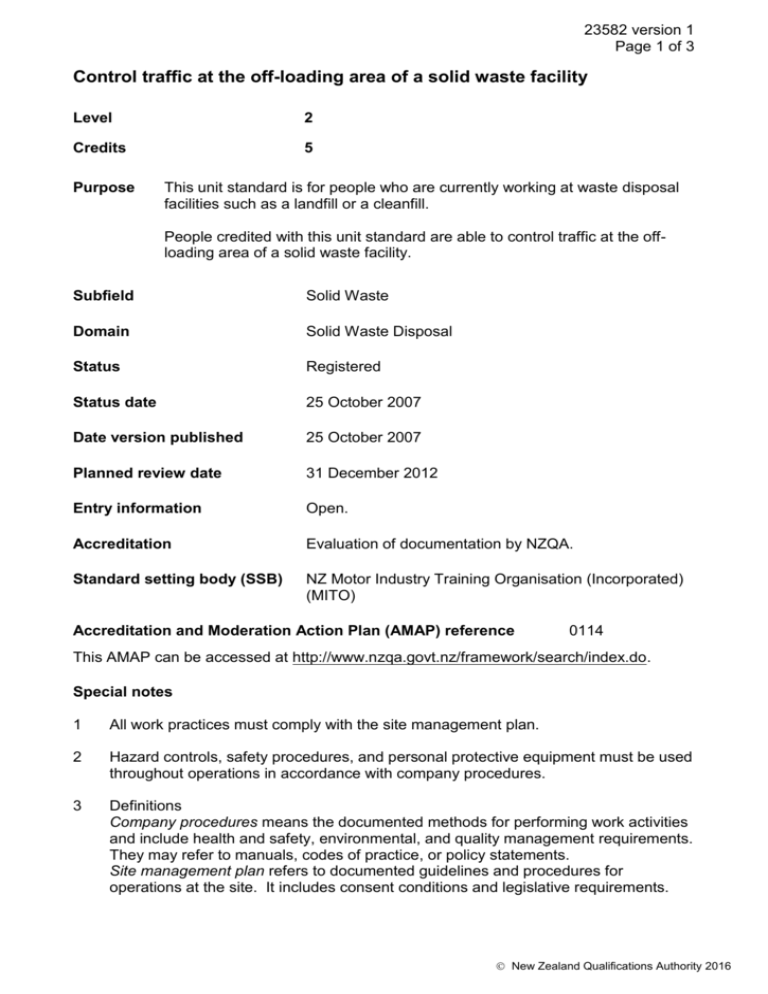
23582 version 1 Page 1 of 3 Control traffic at the off-loading area of a solid waste facility Level 2 Credits 5 Purpose This unit standard is for people who are currently working at waste disposal facilities such as a landfill or a cleanfill. People credited with this unit standard are able to control traffic at the offloading area of a solid waste facility. Subfield Solid Waste Domain Solid Waste Disposal Status Registered Status date 25 October 2007 Date version published 25 October 2007 Planned review date 31 December 2012 Entry information Open. Accreditation Evaluation of documentation by NZQA. Standard setting body (SSB) NZ Motor Industry Training Organisation (Incorporated) (MITO) Accreditation and Moderation Action Plan (AMAP) reference 0114 This AMAP can be accessed at http://www.nzqa.govt.nz/framework/search/index.do. Special notes 1 All work practices must comply with the site management plan. 2 Hazard controls, safety procedures, and personal protective equipment must be used throughout operations in accordance with company procedures. 3 Definitions Company procedures means the documented methods for performing work activities and include health and safety, environmental, and quality management requirements. They may refer to manuals, codes of practice, or policy statements. Site management plan refers to documented guidelines and procedures for operations at the site. It includes consent conditions and legislative requirements. New Zealand Qualifications Authority 2016 23582 version 1 Page 2 of 3 Elements and performance criteria Element 1 Control traffic at the off-loading area of a solid waste facility. Performance criteria 1.1 Off-loading area is inspected for hazards in accordance with company procedures, and hazards are controlled in accordance with site management plan. Range hazards include but are not limited to – ground instability, debris, slippery conditions, overhead obstructions, truck cover. 1.2 Delivery vehicle movements are controlled in accordance with the site management plan. 1.3 Control ensures that, at all times, safe distances are maintained between vehicles in accordance with company procedures. Range 1.4 distance from – fixed body vehicle, rear ejection vehicle, tipping vehicle, articulated vehicle; where applicable public and commercial vehicles are separated; may include – private vehicle and trailer. Site safety rules are monitored and any breaches are reported in accordance with company procedures. Range includes but is not limited to – high visibility vest, hard hat, safety footwear; may include – cell phone use, reversing of vehicles. 1.5 Communication with site personnel is demonstrated in accordance with site management plan. 1.6 Emergency procedures in the event of an accident in the off-loading area are demonstrated in accordance with company procedures. Range initial response procedures, isolation of accident area, preservation of accident site, emergency services contact, reporting. Please note Providers must be accredited by NZQA, or an inter-institutional body with delegated authority for quality assurance, before they can report credits from assessment against unit standards or deliver courses of study leading to that assessment. Industry Training Organisations must be accredited by NZQA before they can register credits from assessment against unit standards. New Zealand Qualifications Authority 2016 23582 version 1 Page 3 of 3 Accredited providers and Industry Training Organisations assessing against unit standards must engage with the moderation system that applies to those standards. Accreditation requirements and an outline of the moderation system that applies to this standard are outlined in the Accreditation and Moderation Action Plan (AMAP). The AMAP also includes useful information about special requirements for organisations wishing to develop education and training programmes, such as minimum qualifications for tutors and assessors, and special resource requirements. Comments on this unit standard Please contact the NZ Motor Industry Training Organisation (MITO) info@mito.org.nz if you wish to suggest changes to the content of this unit standard. New Zealand Qualifications Authority 2016

